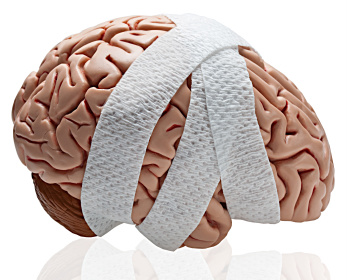
Source: www.re-gel.com
We are all afraid of the term “head injury” as we strongly believe the fact that head injury can be a seriously fatal condition. How many of us actually know how to identify this condition early to prevent the fatal outcome? My job in a neurosurgical centre for the past 3 years shows that poor knowledge among the public has led to the demise of many otherwise salvageable patients.
Let us all understand the basic anatomy of the brain first. The brain is placed inside the skull – a closed solid box. There is a thin layer covering the brain in between the skull and the brain. Brain is floating in a pool of cerebrospinal fluid which maintains its buoyancy and absorbs impact up to a certain extent but injury happens when the impact is very high.
Two key points to remember is that :
- Not all traumas must be accompanied by head injury.
- Not all head injury patients will be unconscious.
Following traumatic head injuries, most patients will suffer a period of loss of consciousness after which most will regain full consciousness. Some patients will have a certain amount of amnesia which means temporary or permanent memory loss in the events occurring before or after the trauma.
The volume inside the skull is fixed and referred to as intracranial volume and this volume increases after trauma to the brain which leads to unconsciousness and if prolonged can lead to death. Unlike all other body parts, the brain does not heal or regenerate and structural damage to the brain is permanent.
Recognizing raised intracranial pressure symptoms are the cardinal points to early identification of injury to the brain. These symptoms include:
- Headache
- Generalised body weakness
- Agitation and restlessness
- Drowsiness or giddiness
- Repetitive vomiting
- Seizures or fits
- Vision blurring
- Deep sleep
- Prolonged unconsciousness (most will regain consciousness within first 10 minutes)
- In infants : poor feeding, less active, irritability and inconsolable crying
At times, patient can return to full consciousness level after a period of loss of consciousness and then later on suddenly deteriorate again or collapse. This period is defined as “lucid interval”. This interval is the golden time to pick up the above symptoms which can be up to about 6 to 8 hours and prevent death. After a doctor’s visit following a fall or minor trauma, we often receive points to watch out in case of injury to the brain is present. This is called the “Head Injury Advise” and mainly comprises of looking out for the above said symptoms.
The knowledge to gain here is the ability to recognize the early signs of increased intracranial pressure. If symptoms are present, then immediate referral to the nearest hospital is necessary. Usually the neurosurgical team is consulted and further imaging is indicated such as “Computed Tomography (CT)” scan to decide on further treatment. So please contribute in early detection of patients’ with head injury and help us in preventing unnecessary deaths.
Dr Vinodh Vayara Perumall is a neurosurgical medical officer whose passion for neurosurgery has brought him all the way from Perak to Sabah.
[This article belongs to The Malaysian Medical Gazette. Any republication (online or offline) without written permission from The Malaysian Medical Gazette is prohibited.]
References :
- Handbook Of Neurosurgery, Seventh Edition, Thieme Medical Publishers, 2010; Chapter 27: 850-919
- Teasdale et al., Assessment of coma and impaired consciousness: A practical scale, Lancet, Jul 13 1974; 2(7872):81-4.
- Singh et al., “Head Trauma.”, 2006, Emedicine (online)
